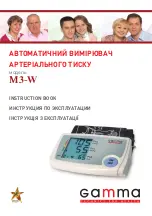
135
Kaleido-MX (1RU)
Installation & Service Manual
Cooling Fan Replacement
A cooling fan has moving parts that, over time, can wear out. In the final stages of fan wear
out, the fan may make a distinctive sound and it rotates at a slower speed, thereby reducing
airflow which undermines its ability to remove heat from electronic circuitry. Under this
condition, fan replacement is required.
Also, dust contained in the ambient air can accumulate on the fan and on surfaces around
the fan and heatsink, thereby reducing airflow, and preventing air from coming into direct
contact with the heatsink surfaces which undermines its ability to remove heat from the
electronic component. Under this condition, cleaning is necessary and fan replacement
may be required.
Some diagnostic procedures may interrupt normal system operation. Changing a card’s
cooling fan will interrupt normal system operation. Down time can be minimized by
swapping in a new or a known good card to restore system operation quickly. Schedule
maintenance operations during off hours when the system is not in use.
Diagnostics
The KMX-3901 card’s electronic circuitry generates heat that must be shed by forcing air to
move across heat-generating components. Reduced air flow or high ambient temperature
results in heat build-up within temperature-sensitive components on the card. This can
cause unexpected behavior such as glitches or even a system freeze or shutdown. The
multiviewer self-diagnoses high temperature conditions by raising critical temperature and
fan alarms.
Critical temperature and fan alarms are reported through the following mechanisms:
• The alarm statuses in XAdmin are called
XXXX fan failed
where
XXXX
identifies the
specific fan. For example,
DAP 0 fan failed
.
• A
Fan Failure
message is displayed in the dashboard.
The fan alarm indicates that the fan is not rotating fast enough due to wear and thus it may
not provide enough cooling. A fan alarm must be addressed right away. A critical
temperature alarm can be ignored if it is accompanied by a fan alarm as the root cause is
the fan not rotating fast enough.
Otherwise, if the fan is running properly according to the fan alarm, then the
Critical
Temperature Alarm Corrective Actions
steps should be taken.
Critical Temperature Alarm Corrective Actions
If the fan alarm is inactive and the critical temperature alarm is active, then undertake the
following diagnostic steps in the following order:
1 Confirm that the room temperature is within multiviewer’s operating temperature
range specification. If necessary, take corrective actions by, for example, increasing the
amount of air conditioning made available to the multiviewer’s frame.
2 Confirm that air flow around the multiviewer’s frame is not obstructed. If necessary,
take corrective actions by, for example, removing obstructions or rerouting cables
around and away from the multiviewer’s frame.
Summary of Contents for GRASS VALLEY KALEIDO-MX 1RU
Page 12: ...12 Notices...
Page 22: ...22 Overview Functional Block Diagrams...
Page 154: ...154 Maintenance Troubleshooting Dashboard Messages...
















































